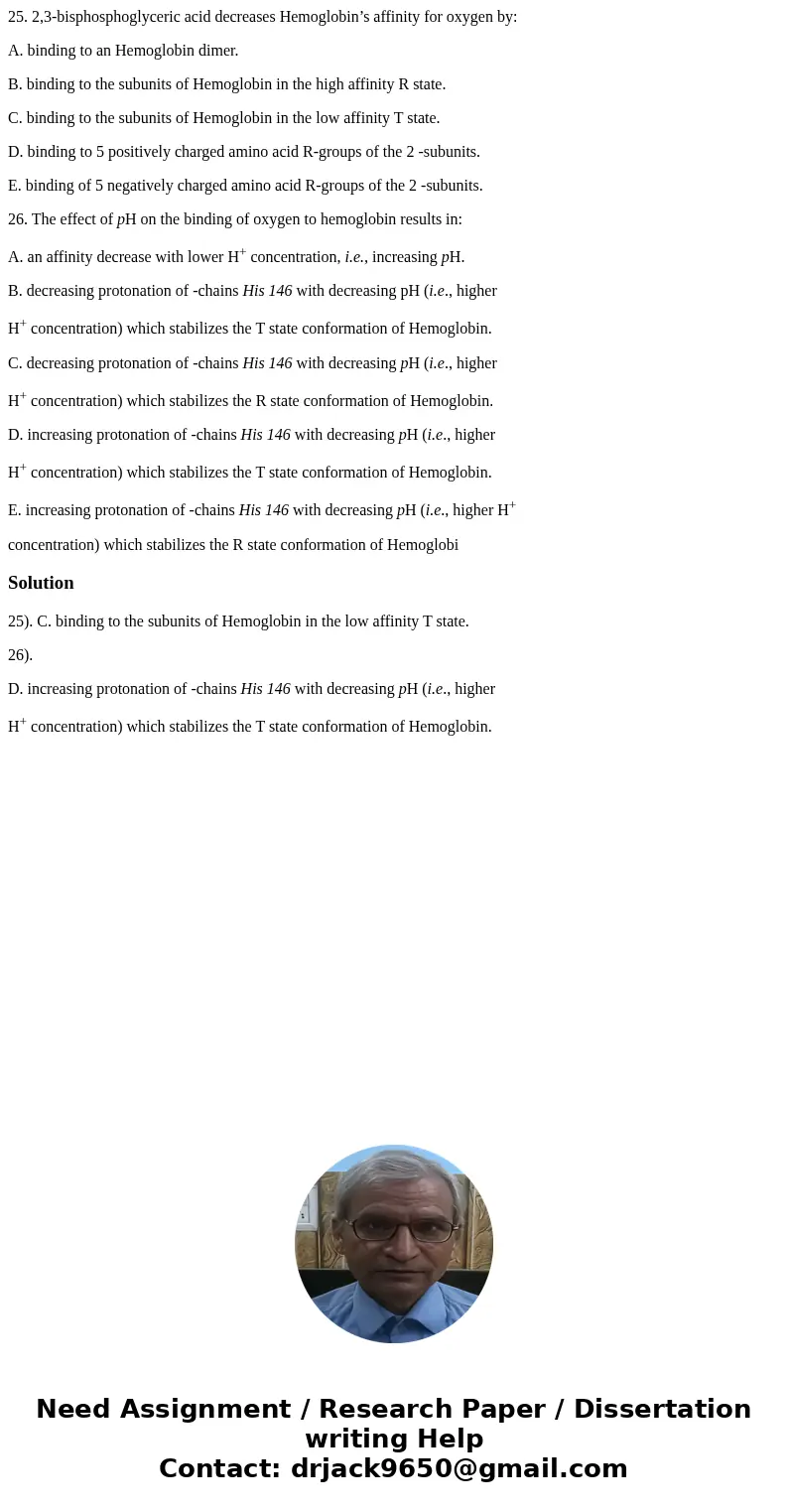25 23bisphosphoglyceric acid decreases Hemoglobins affinity
25. 2,3-bisphosphoglyceric acid decreases Hemoglobin’s affinity for oxygen by:
A. binding to an Hemoglobin dimer.
B. binding to the subunits of Hemoglobin in the high affinity R state.
C. binding to the subunits of Hemoglobin in the low affinity T state.
D. binding to 5 positively charged amino acid R-groups of the 2 -subunits.
E. binding of 5 negatively charged amino acid R-groups of the 2 -subunits.
26. The effect of pH on the binding of oxygen to hemoglobin results in:
A. an affinity decrease with lower H+ concentration, i.e., increasing pH.
B. decreasing protonation of -chains His 146 with decreasing pH (i.e., higher
H+ concentration) which stabilizes the T state conformation of Hemoglobin.
C. decreasing protonation of -chains His 146 with decreasing pH (i.e., higher
H+ concentration) which stabilizes the R state conformation of Hemoglobin.
D. increasing protonation of -chains His 146 with decreasing pH (i.e., higher
H+ concentration) which stabilizes the T state conformation of Hemoglobin.
E. increasing protonation of -chains His 146 with decreasing pH (i.e., higher H+
concentration) which stabilizes the R state conformation of Hemoglobi
Solution
25). C. binding to the subunits of Hemoglobin in the low affinity T state.
26).
D. increasing protonation of -chains His 146 with decreasing pH (i.e., higher
H+ concentration) which stabilizes the T state conformation of Hemoglobin.

 Homework Sourse
Homework Sourse